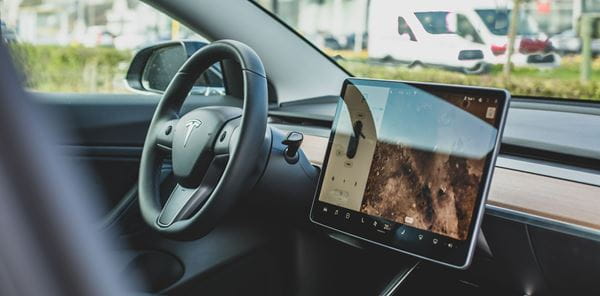
Autonomous driving: What’s next?
Once the stuff of science fiction, self-driving vehicles could be about to hit the road. Partly spurred on by the global pandemic, the autonomous vehicle (AV) market has accelerated in 2021, with unparalleled levels of investment and technological advancement. In this blog, we’ll be looking at what’s driving the AV industry right now and what you can expect in the coming year and beyond.
Firstly, what is autonomous driving?
To be specific, there are five levels of autonomous driving:
Level one
The driver remains in control of the steering but the driving assistance system (e.g. traditional cruise control systems) may help with speed, acceleration, and braking.
Level two
The driver can disengage from some driving functions such as steering, acceleration, vehicle distance, braking and speed (e.g. with adaptive cruise control systems) but must still pay attention and be ready to intervene.
Level three
Under ideal road conditions (think multilane highways with a central divider), the driver can perform other activities while the system takes partial to full control, like Tesla’s AutoPilot system and Audi’s AI Traffic Jam Pilot.
Level four
The vehicle can control itself on highways or (certain) city streets without driver input (e.g. Google’s Waymo ride-hailing service in the USA). In unsafe conditions, these vehicles are programmed to park in a safe place and/or give control back to the driver/remote operator.
Level five
The vehicle, controlled by an advanced AI system, can drive itself under any conditions and doesn’t require any human interaction. Even with current technologies full AV is extremely complicated and will only be achievable in the (near) future.
Self-driving regulations
Self-driving certainly sounds good, but is it allowed? Since the United Nations Economic Commission for Europe (UNECE) passed new regulations in January 2021 allowing the use of automated lane keep assist on public roads, governments have been scrambling to pass new AV regulations. Since then, Germany, Japan and the UK have officially approved conditional eyes-off Level 3 AV driving on public roads, with more European countries expected to pass similar legislation in 2022. Germany is expected to become the first country to pass new Level 4 AV laws.
AV around the world
Things are speeding up. Currently, there are countless AV pilots all over the globe, with more and more acquisition deals, partnerships and consortiums by the day. Some recent ones include Amazon’s acquisition of Zoox, Aurora’s purchase of Uber’s AV division, and Toyota’s acquisition of Lyft’s AV division. There’s also the new Autonomous Vehicle Computing Consortium, comprising leading automakers, chipmakers and suppliers, including ARM, Bosch, Continental, Denso, GM, Toyota, Nvidia, and NXP. While there are similarities, there is also much difference in how countries are approaching AV technology. In Europe, mass mobility seems top-of-mind, with public/private partnerships geared towards developing autonomous shuttles. In China, the focus is on AI, as a leading global developer in that field. US tech giants, meanwhile, are focused on applications such as robotaxis, last-mile deliveries and trucking. In Greece, the beginning was made in Trikala a few years ago with the launch of autonomous moving buses and recently a similar transport system was created in Lamia. The relevant provision that unlocks the use of the autonomous driving system in many cities of Greece must be submitted to the Parliament soon.
What's next?
Thanks to rapid technological advances, the development of self-driving cars are being fast-tracked. In fact, the global AV market is predicted to top 1.75 trillion euros by 2030 – that’s 58 million self-driving vehicles on the world’s roads! At LeasePlan, we’re always interested in innovations in the mobility industry and we will continue to monitor trends in the field of autonomous driving.
Sources: Autoevolution: The five levels of autonomous driving explained Gizmo China: Volvo to debut Ride Pilot autonomousdriving feature in California later this year Car & Driver: Mercedes Drive Pilot Level 3Autonomous System to Launch in Germany Here 360: The road to hands-free: automated driving trends for2022 Tech HQ: The state of the autonomous vehicle space heading into2022






